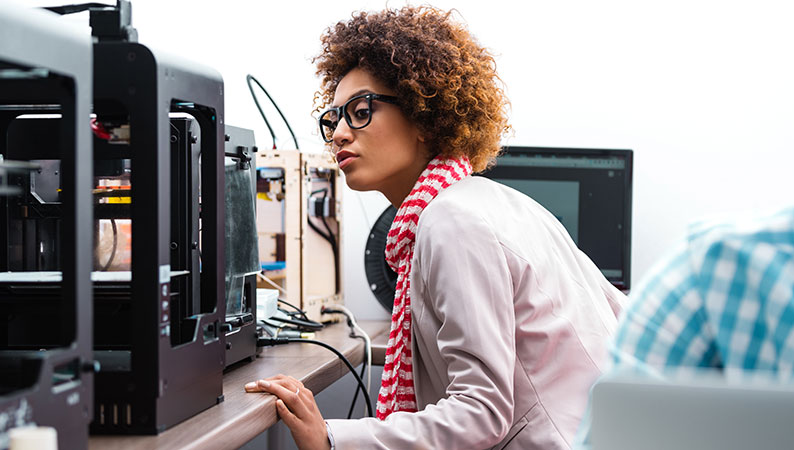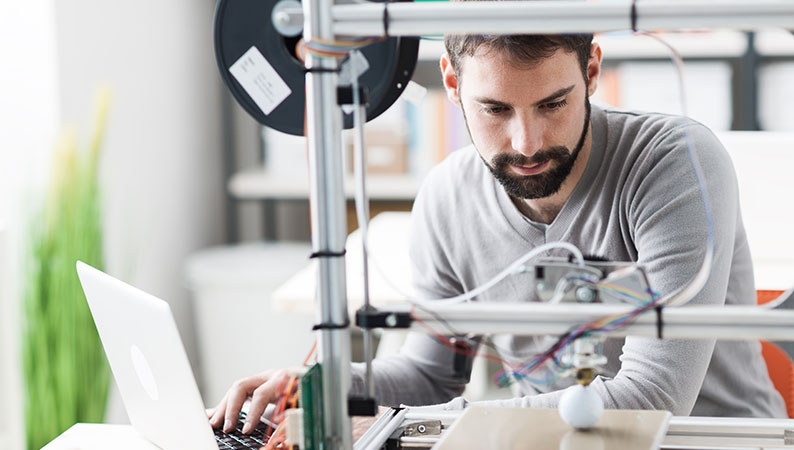
Why are patents important in a post-COVID world?
It has been almost two years since the world changed forever — when the outbreak of COVID-19 exploded into a pandemic, and numerous aspects of society as we had known it shut down, went on hold or transformed. Understanding the full repercussions will be a near-Herculean task for future historians, but there are some things we can say now with reasonable certainty.
The innovation landscape of the COVID-19 era
For one, many areas of business, including the Intellectual Property (IP) sector, had to digitally transform (more than they already had) to ensure a successful transition to remote operations. The pace at which organizations moved to remote work was so rapid that it has notably accelerated the overall timeline for enterprise digital transformation. Most of the business done by 50% of Forbes Global 2000 companies now depends on "their ability to create digitally transformed products, services and experiences." The general public did not see all of the tech developments that made the shift to remote working possible, but they are very much present. Many were in the medical device market, but there were also new household appliances, finance apps, biotechnology tools, artificial intelligence frameworks and a great deal more.
Those responsible for such acts of original invention and creation are, of course, legally entitled to seek whatever IP rights might apply: trademark, copyright, trade secret or patent protection. Generally speaking, a patent application is essential for any inventor. The risks incurred by failing to file an application and obtain a patent grant — i.e., wholesale duplication and the loss of market opportunity — are often too great for any would-be patent owner to tolerate. As one of the most respected IP law firms in the region, Dennemeyer & Associates Luxembourg has become an important player on behalf of local clients. With a full suite of legal services to help you protect your patents or other intangible assets effectively, we are confident that our team can provide reliable protection with efficient oversight!
Turning to the subject of uncertainties, one of the things we do not yet grasp about the pandemic period is this: How much of the resultant digital transformation and innovation translates into actual patent filings? The World Intellectual Property Organization (WIPO), which catalogs the filing of every IP right application in the annual Intellectual Property Indicators study, has yet to release an edition with 2020's data and likely will not do so until late 2021. Currently, one would need to conduct an individual patent search through national and international IP databases to determine if a given invention has been successfully patented or has a patent application pending.
Why are inventions and patents more important now than ever before?
The COVID-19 pandemic further showcased the relative fragility of our world. Some nations – most of them fairly small, like New Zealand, Vietnam and Cuba – responded effectively to the crisis and significantly mitigated infections and deaths from the disease. But it is hard to say with confidence that any government was truly prepared, especially for the pandemic's massive economic impact.

Even more decisively, worldwide trends such as climate change and globalization will continue to have a long-term impact. These phenomena, particularly the former, demand ingenuity just as urgently as COVID-19 has. The next patented invention will likely not unlock the ideal industrial application to solve problematic carbon emissions or cure a deadly disease, but it might be the catalyst for other innovations that bring us closer to solutions for tackling these global challenges.
Thus we cannot stress enough how imperative it is for every inventor across multiple fields to continue innovating and building their patent portfolio. Though certain supply-chain shortages may make it harder to manufacture new goods, the COVID-19 crisis does not seem to have had a major negative impact on creativity.
Has the patent application process changed? And how might it be in the future?
Necessity forced numerous changes to the standard processes for filing patent claims in many jurisdictions. Governing bodies like the U.S. Patent and Trademark Office (USPTO) and European Patent Office (EPO) rescheduled various proceedings or shifted essential elements of the patent system (in-person hearings and interviews) to the digital realm. In many cases, these offices also waived or postponed certain patent filing fees and extended due dates by which inventors had to submit a completed application. The patent process itself did not change in terms of steps required, but regulators made them easier to accomplish under lockdown conditions.
Litigation disputes over patentability or other points of IP law were mostly postponed when possible. But as it grew increasingly clear throughout 2020 that the pandemic's end was not yet imminent, even the older, more tradition-bound courts digitally transformed their procedures.
The COVID-19 crisis is not slowing down innovation in any way, and seems more likely to inspire people than hinder their creativity.
Will these temporary alterations to patent law operation become permanent? Right now, it is too early to say. But if the USPTO, EPO and their many counterparts realize that such changes make the process easier or more efficient without sacrificing any of its thoroughness, it is reasonable to assume that some pandemic-era adjustments will remain. If a more straightforward approach to patenting makes it easier for individuals and organizations to create, everybody wins.
Looking out for your patent rights long-term
Infringement has always been a risk that every current or forthcoming patent owner must face. It is fair to wonder whether the increasing digitalization of application processes might make patents easier to compromise for counterfeit. Dennemeyer has anticipated concerns like this.

On the one hand, history has shown that ingenuity and new ideas are often redoubling in demanding situations. On the other hand, patent applications and IP rights provide means for turning these new ideas into exploitable innovations. With this in mind, one can be relatively secure in assuming that the reasons for patenting will remain largely the same before and after the COVID-19 pandemic. Projections forecast an increase in the number of patents, industrial designs and even trademarks worldwide over the next few years.
Although the figures are only just beginning to emerge, it is already clear that the R&D investments in technologies such as 5G, artificial intelligence, cybersecurity, electric vehicles, automation and drug development will lead to unprecedented improvement in productivity, processes and sales.
Today, it is more crucial than ever to find an experienced patent lawyer and other IP experts to streamline and perfect the innovation, invention and patent filing processes. The world needs all the bold and practical ideas it can get, and the professionals at the Dennemeyer Group are ready and willing to help you make the most of your innovations.
Filed in

Take an in-depth look at medical devices and how IP will foster, inform and protect more innovative healthcare experiences.



